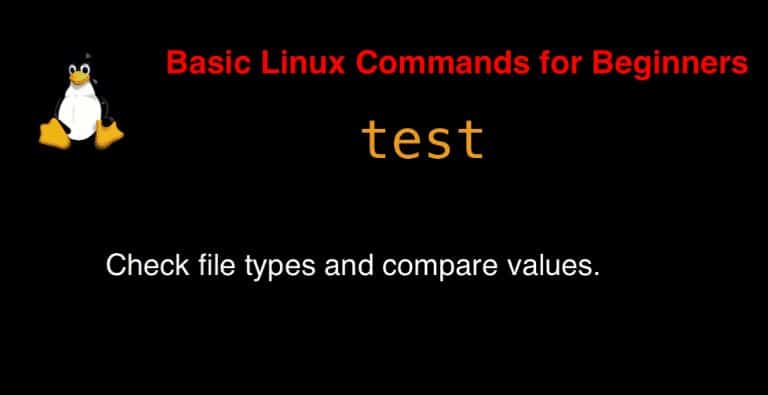Table of Contents
Introduction
test command in Linux means Checking file types and comparing values. In the Linux operating system, checking conditions and taking actions based on those checks is a crucial skill for users, especially when writing shell scripts. One of the most important commands for performing these condition checks is the test command.
This command allows you to check file attributes, strings, and numbers, and based on the results, you can determine the next steps in your script. In this article, we will explore the test command in detail, how to use it, and provide practical examples that you can apply in your daily tasks.

test command syntax in Linux
test EXPRESSION
test
[ EXPRESSION ]
[ ]
[ OPTION
According to the man page, the test command checks file types and compares values.
For more detailed information about the test command, you can use:
man testtest command in Linux with Examples
To compare two numbers, use:
num1=5
num2=10
if [ $num1 -lt $num2 ]; then
echo "$num1 is less than $num2"
else
echo "$num1 is not less than $num2"
fiOr using a direct test in a single line:
$ test 10 -gt 5 && echo "Yes"Checking Multiple Conditions with Logical AND
if [ -e /path/to/file ] && [ -w /path/to/file ]; then
echo "File exists and is writable."
else
echo "File does not exist or is not writable."
fiTo check if a file is not empty, use:
if [ -s /path/to/file ]; then
echo "File is not empty."
else
echo "File is empty."
fiTo combine logical operators, use:
if [ -e /path/to/file ] && ([ "$str1" = "$str2" ] || [ $num1 -lt $num2 ]); then
echo "Conditions met."
else
echo "Conditions not met."
fiConclusion
The test command is a powerful and flexible tool in Linux for performing condition checks. By mastering its options and syntax, you can write more efficient shell scripts and manage automation tasks with ease. Hopefully, this article has given you a clearer understanding of how to use the test command examples and how to apply it to your daily tasks. Keep exploring and leveraging the powerful tools of Linux to enhance your work efficiency and system management. Thank you for reading the DevopsRoles page!

